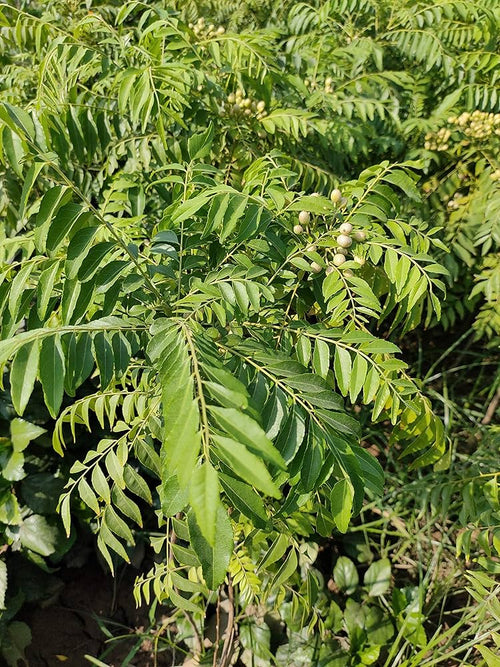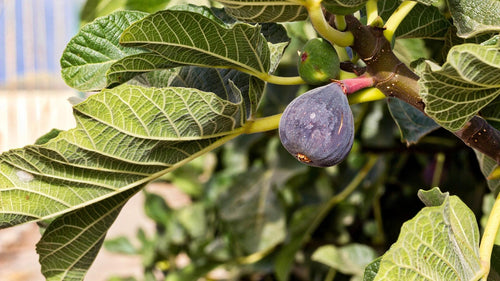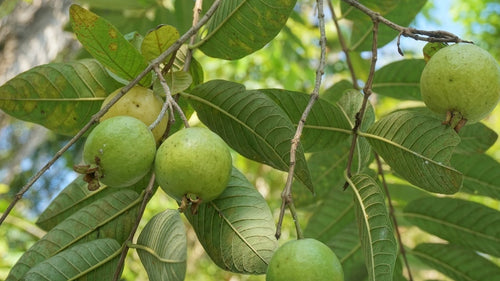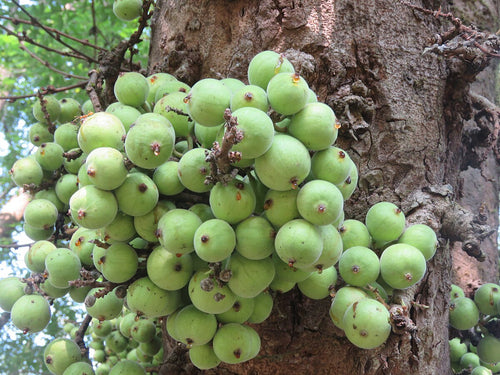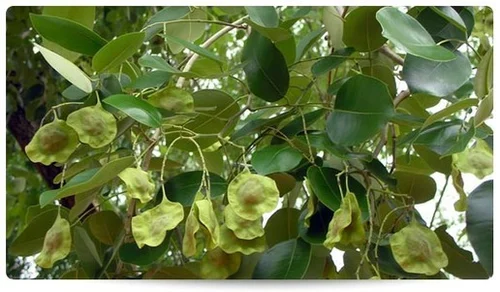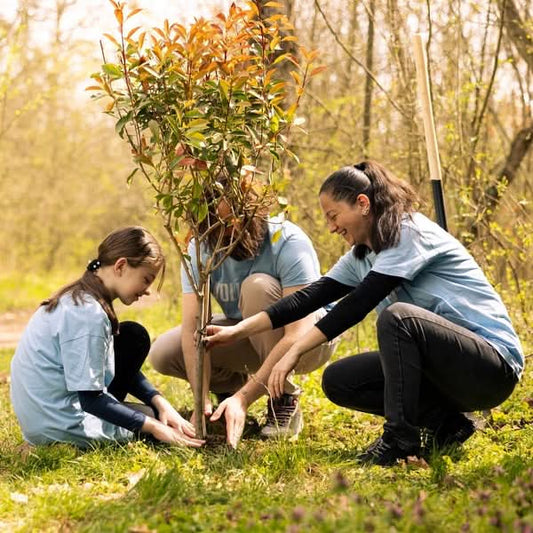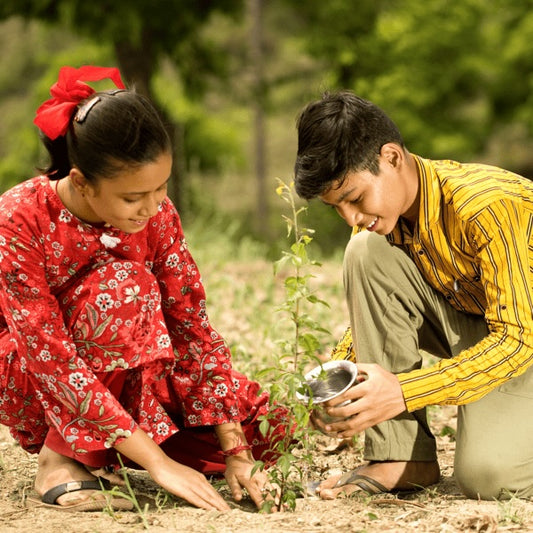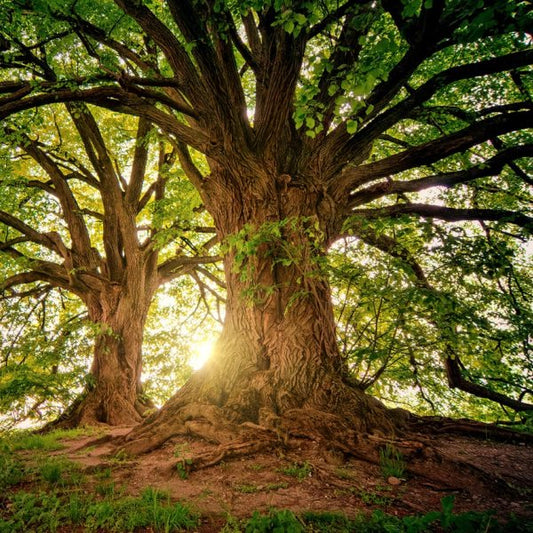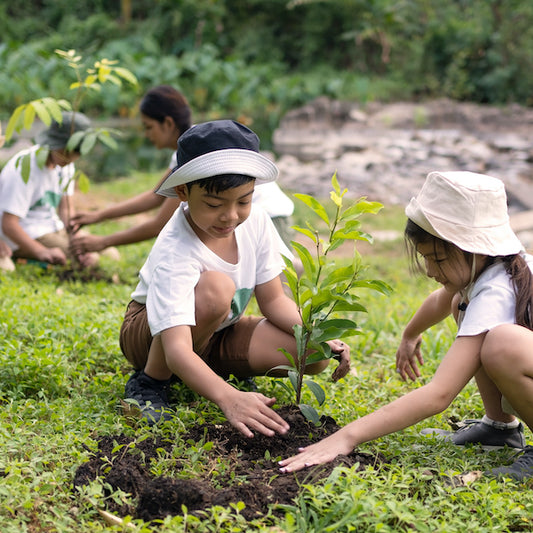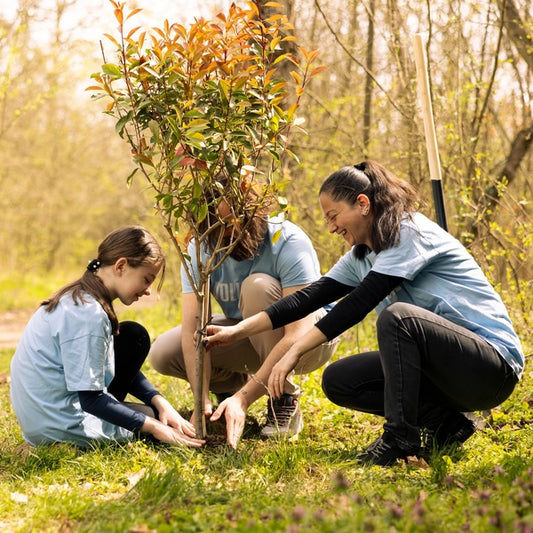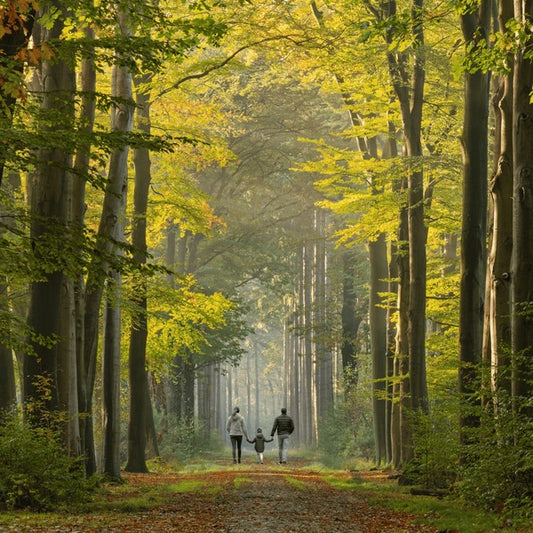VOIS Green Mission: Advancing Urban Sustainability and Carbon Neutrality
The VOIS tree plantation initiative, a CSR effort spearheaded by the Vodafone Idea Foundation and implemented by Indev Consultancy, is rooted in the t Read more
Project Update 3
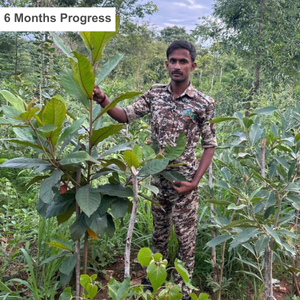
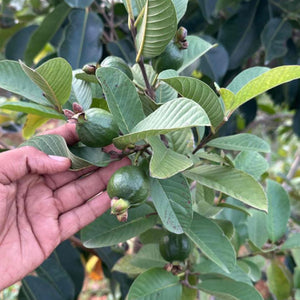
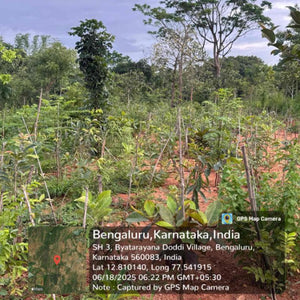
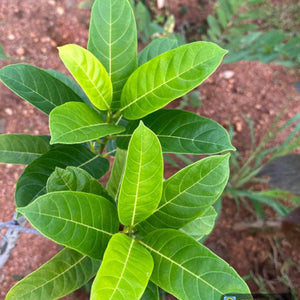

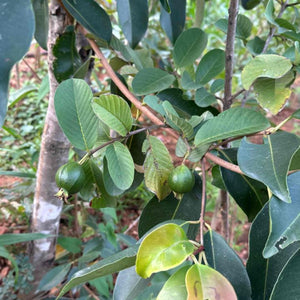
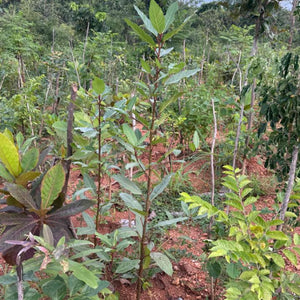
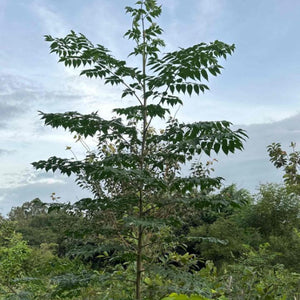
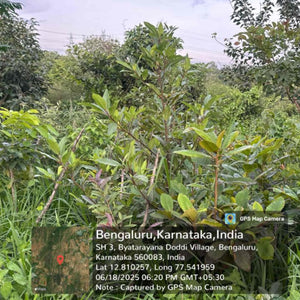
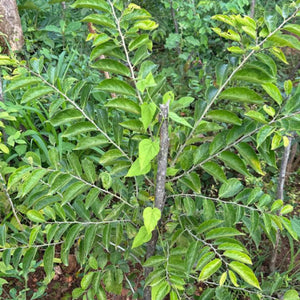
Project Update 2
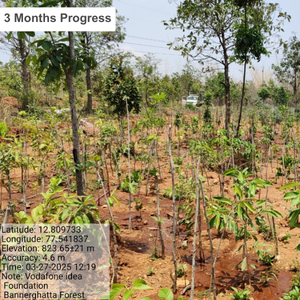
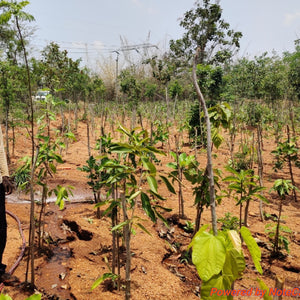
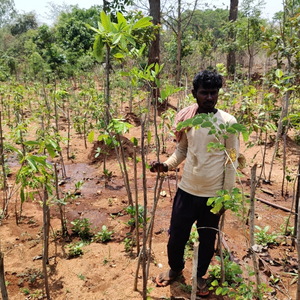
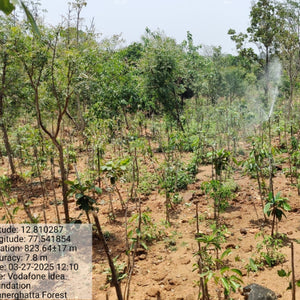
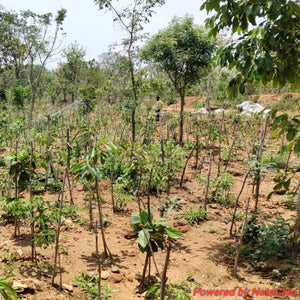
Project Update 1
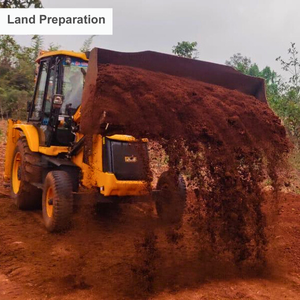
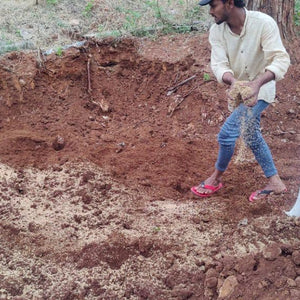

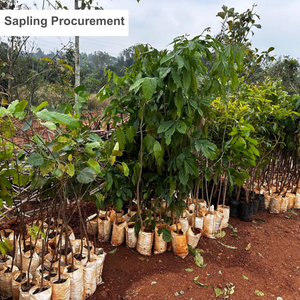

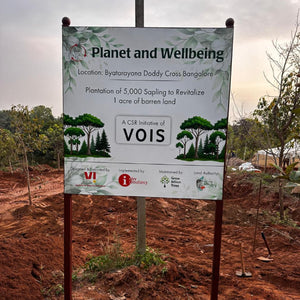
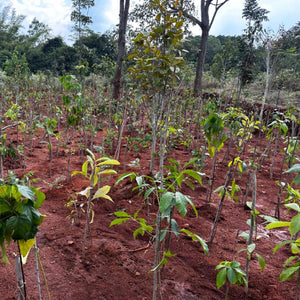
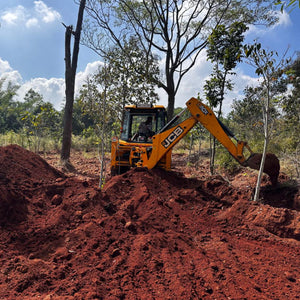

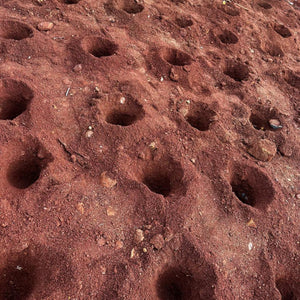
Digital Forest
Forest with 5,000 Trees planned
Want to plant your tree now?
Plant a Tree @ 299VOIS Green Mission: Advancing Urban Sustainability and Carbon Neutrality
The VOIS tree plantation initiative, a CSR effort spearheaded by the Vodafone Idea Foundation and implemented by Indev Consultancy, is rooted in the transformative community forest concept. This initiative is an integral part of the Planet & Wellbeing Project, which emphasizes large-scale urban reforestation to restore green cover and foster sustainable practices in marginalized communities.
By creating community forests, the project targets carbon footprint reduction, offsets carbon emissions, and mitigates the adverse effects of climate change. It actively integrates technology to track its environmental impact and engages local communities through education, digital tools, and sustainability outreach programs. These efforts empower underserved communities to embrace climate-positive actions and enhance environmental resilience.
The plantation drive not only contributes to a greener urban landscape but also fosters long-term ecological benefits such as improved air quality, enhanced biodiversity, and climate neutrality. It stands as a testament to VOIS's commitment to promoting environmental stewardship and building a sustainable future for all.
Project Planning & Execution
No. of trees: 5000 Trees
Plantation Location: Byatarayana Doddy Cross, Bengaluru, Karnataka 560083
Plantation Duration: December 20th, 2024 to December 28th, 2024
Names of Species: Atti, Malabar bauhinia, Guava, Kachnar, Spanish Cherry, Paradise Tree, Cotton Tree, Cannonball Tree, Herbalife's Tree, Ghost Tree, Pink Poui, Kadamba, Cherry Blossom, Evora Tree, Soapberries, Crape myrtle, Champak, Black Rosewood, Banyan, Fig, India Almond, Jamun V1, Jamun V2, Indian Kino, Indian Rosewood, Bamboo, Mahua, Khejri, Pongame Oil Tree, Malabar Neem, Saaj, Peepal Tree, Jackfruit V1, Jackfruit V2, Neem, Tamarind, Arjun, Mahogany
Species Selection & Its Benefits:
For the VOIS project, native species were carefully chosen to ensure ecological compatibility with the local environment. The species selected in the community forest are diverse, native, and ecologically significant. This thoughtful selection ensures the sustainability and functionality of the forest ecosystem while addressing multiple environmental and socio-economic needs.
The species selected for the community forest plantation are primarily native to the region, ensuring ecological compatibility and long-term sustainability. Native species are well-adapted to the local climate, soil, and ecosystem, making them resilient to environmental stresses. The plantation includes a mix of fruit-bearing trees and flowering plants such as Mango, Jamun, and Tamarind, which provide food, shelter, and resources for local fauna, supporting biodiversity.
Additionally, species like Neem and Mahua contribute to soil health by preventing erosion, enriching the soil with nitrogen fixation, and providing natural remedies. Trees such as Banyan and Peepal play a vital role in carbon sequestration, helping mitigate climate change by absorbing CO₂ and improving air quality. Sacred Wood Apple and Arjun trees offer medicinal properties, contributing to community health and wellness.
The layered structure of the forest promotes ecological balance, improves water retention, and enhances environmental resilience. Furthermore, the plantation supports local livelihoods through the production of fruits and medicinal products from species such as Bidi Leaf Tree and Wild Jack, contributing to both economic development and community well-being while fostering long-term environmental sustainability.
This strategic selection ensures a multi-functional forest that supports biodiversity, enhances soil and air quality, and provides socio-economic benefits to the local community.
Beneficiaries Details
-
Target Population: Employees, stakeholders, and local community members of Bengaluru
-
Age Group: All age groups focus on adults to seniors
-
Gender: Inclusive of all genders
- Social & Economic Status: Open to all social and economic backgrounds, emphasizing community involvement
Planting Methodology and Its Advantages
Community Forest: The planting methodology for creating a community forest under this VOIS plantation project follows a two-layer structure, designed to replicate a natural forest ecosystem and enhance ecological balance.
-
Canopy Layer: This layer comprises native tree species selected for their ability to form a dense canopy that provides shade, supports carbon sequestration, and improves air quality. The canopy layer creates a microclimate that regulates temperature, reduces evaporation, and protects lower vegetation layers. It also serves as a habitat for birds, pollinators, and other wildlife, contributing to biodiversity.
-
Tree Layer: This layer includes native tree species, selected for their ability to provide shade and fruit while promoting biodiversity. The trees are planted in a structured manner, allowing for proper spacing to encourage canopy formation and maximize sunlight penetration to lower layers. This arrangement not only supports the overall ecosystem but also aids in carbon sequestration, improves air quality, and enhances the community's aesthetic and ecological value.
This two-layer approach ensures that the forest remains resilient to climatic changes, supports a diverse range of flora and fauna, and provides long-term benefits to the local community.
Advantages of Community Forest:
-
Biodiversity Conservation: Community forests support a rich diversity of plant and animal species by creating a natural habitat. By planting a mix of native species and maintaining a healthy ecosystem, these forests become sanctuaries for local wildlife, including endangered species. The layered structure of the forest, with trees and canopy, enhances habitats and promotes ecological balance.
-
Carbon Sequestration: Community forests play a crucial role in mitigating climate change by capturing and storing carbon dioxide. The trees absorb CO₂ through photosynthesis and store it in their biomass and soil, reducing the overall carbon footprint. This contribution to carbon sequestration is essential in the fight against global warming and climate instability.
-
Enhanced Air Quality: Trees in community forests act as natural air purifiers by absorbing pollutants like nitrogen oxides, sulfur dioxide, and particulate matter. In addition to providing oxygen, they filter harmful substances from the air, thus improving local air quality. This is particularly important in urban areas where pollution levels can be high.
-
Water Conservation: The site utilizes flood irrigation to ensure an ample and consistent water supply for the saplings, particularly during dry periods. This method supports the sustainable growth of trees by evenly distributing water across the plantation area. The approach helps maintain healthy ecosystems and contributes to the long-term success of reforestation efforts.
-
Reduction in Noise Pollution: The dense forest acts as a natural sound barrier, significantly reducing noise pollution from nearby urban areas. The multiple layers of trees and canopy absorb and deflect sound waves, creating a quieter, more peaceful environment in urban lands, benefiting both residents and wildlife by mitigating the disruptive effects of urban noise.
-
Improved Soil Health: The presence of diverse plant species, including nitrogen-fixing plants and organic matter from decaying leaves, contributes to soil fertility. The roots of trees and canopy help prevent soil erosion by stabilizing the soil structure, reducing runoff, and improving water infiltration. This leads to healthier, more resilient soils that can support future plant growth.
-
Economic Benefits: The forest serves as a sustainable source of resources such as fruits, nuts, medicinal plants, and honey, which can be harvested for local economic gain. These products create income-generating opportunities, helping to improve livelihoods. Additionally, the forest’s role in preserving water quality and soil health can lead to better agricultural yields for the surrounding community.
-
Social Empowerment: Community forests engage local populations in their management and upkeep, fostering a sense of ownership and responsibility. This inclusion provides opportunities for employment and skill-building in areas such as forest maintenance and eco-tourism. Community involvement promotes sustainable practices, environmental awareness, and strengthens social ties, contributing to the overall well-being of the community.
-
Cultural and Recreational Value: Community forests can become important cultural and recreational spaces, offering local people a place to gather, connect with nature, and practice traditions. These spaces often host community events, festivals, and educational programs, strengthening social ties and fostering environmental stewardship among future generations.
-
Microclimate Regulation: As climate change leads to extreme weather events, community forests help mitigate its impact by acting as buffers against floods, heat waves, and droughts. The forest can regulate microclimates, cool the environment, and reduce the intensity of extreme weather. Furthermore, they act as natural disaster mitigation zones, providing shelter from storms and reducing the risks of landslides or soil erosion.
- Resilience to Natural Disasters: Properly managed community forests can help reduce the impact of natural disasters, such as floods and landslides, by stabilizing the land and acting as natural barriers.
Activities during Tree Plantation
The tree plantation event was a thoughtfully designed and collaborative initiative, beginning with the Indev Consultancy team greeting the VOIS team with handmade paper flower bouquets.
Mr. Atul Dubey provided an overview of VOIS's impactful initiatives, followed by an insightful session from Mr. Satender Kumar of Grow Billion Trees (GBT), who explained advanced techniques like the Miyawaki method.
Representatives from Indev Consultancy, including Mr. Naresh Patel and Mr. Manvendra Pratap Singh, introduced a Plantation Growth Tracking module through a QR code. This module enables users to monitor sapling growth over time, view periodic updates via captured images, and access live satellite images for real-time plantation progress. The Forest Department Official also contributed valuable insights on sustainable forestry practices.
Participants then moved to the plantation site, where the Field Manager, Mr. S.P. Dinesh, provided hands-on training on proper planting techniques, including sapling placement, tying methods, and soil preparation. Ms. Nidhi Singh and Mr. Satender Kumar also assisted the participants during the plantation process, offering guidance and support to ensure proper planting and care for the saplings.
An engaging discussion on the 38 species planted deepened the participants' understanding of the ecological benefits of each species. Together, the team planted approximately 1,000 saplings, creating a sense of accomplishment and community.
Following the plantation activity, participants gathered to share their experiences. This reflective session, filled with personal stories and insights, was followed by a Q&A session led by Ms. Nidhi Singh, Mr. Satender Kumar, and Mr. S.P. Dinesh. They addressed queries while sharing their experiences and the importance of such initiatives for long-term environmental impact.
The event concluded with a heartfelt closing note from Mrs. Hema Murali of the VOIS team, summarizing the key takeaways and emphasizing the collective effort to foster a greener future. A communal lunch provided the perfect ending to a day marked by education, action, and collaboration for sustainability.
Trees Planted
| Total Trees Planted: 5000 | |
| Total Species Planted: 38 | |
| Layer 1 | 20 species |
| Layer 2 | 18 species |
|
Layer 1 Species: 20 No. of Plants: 3000 |
||||
|
S. No |
Trees name |
Botanical Name |
Benefits |
No. of plants |
|
1 |
Banyan |
Ficus Benghalensis |
Medicinal properties, Environmental benefits like food shelter, National tree of India |
100 |
|
2 |
Fig |
Ficus carica |
Promote digestive health, Potential anticancer properties, Healthy skin & hair, Source of potassium |
200 |
|
3 |
India Almond |
Terminalia catappa |
Rich in Vitamins, minerals and antioxidants, Improves brain health, Reduce cholesterol |
100 |
|
4 |
Jamun V1 |
Syzygium cumini |
Loaded with fibre, Anti inflammatory, Antidiabetic, Antibacterial, and Radioprotective properties |
100 |
|
5 |
Jamun V2 |
Syzygium cumini |
Rich in antioxidants, Good for digestive health, Manages diabetes, Supports heart health |
100 |
|
6 |
Indian Kino |
Pterocarpus marsupium |
Its an astringent and an antibacterial, Used in anemia, digestive disorders, skin diseases, asthma |
100 |
|
7 |
Indian Rosewood |
Dalbergia sissoo |
Prevents soil erosion, Symbol of strength and beauty, Used to make high quality furniture, flooring etc, Treat syphilis, leprosy and jaundice |
200 |
|
8 |
Bamboo |
Bambusa vulgaris |
Carbon dioxide absorption, Wildlife habitat, Used in textiles, health and decor |
200 |
|
9 |
Mahua |
Madhuca longifolia |
Helpful for skin issues, piles, arthritis and headaches. Helpful in strengthening the immune system, Fruits are an essential food for tribal people |
100 |
|
10 |
Khejri |
Prosopis cineraria |
Providing fodder, fuel for timber and shade, Affecting soil improvement and sand dune stabilization, Combat desertification, Used traditionally for treatment of dysentery, asthma, leukoderma etc |
100 |
|
11 |
Pongame Oil Tree |
Millettia pinnata |
Increasingly used for oil production due to biodiesel use, Crude drug for the treatment of tumors, skin disorders |
200 |
|
12 |
Malabar Neem |
Melia dubia |
Rapid growth, High quality timber, Deciduous nature, Carbon sequestration, Benefits agroforestry, Medicinal properties. |
200 |
|
13 |
Saaj |
Terminalia elliptica |
Wood used for furniture, boat building, railroad tracks, Used to dye and tan leather, Various parts of the tree have medicinal properties |
100 |
|
14 |
Peepal Tree |
Ficus religiosa |
High oxygen production, Air purification, Supporting biodiversity, Soil conservation through its deep roots, Used to treat digestive issues, Beneficial for oral health, Alleviates eye infections. |
100 |
|
15 |
Jackfruit V1 |
Artocarpus heterophyllus |
Improves digestion, Boost immunity, Better vision, Dietary fibre, Reduces inflammation, Strengthens bone |
100 |
|
16 |
Jackfruit V2 |
Artocarpus heterophyllus |
Help diabetics, Energy fuel, Improves sleep quality, Good source of vitamin C, Prevents anemia |
100 |
|
17 |
Neem |
Azadirachta Indica |
Prevents gastrointestinal diseases, Antibacterial properties, Fungal infections, Insect repellant |
200 |
|
18 |
Tamarind |
Tamarindus indica |
Stabilize soils, Make windbreaks, Helps mitigate climate change, Antioxidant boost, Antimicrobial, Weight loss |
100 |
|
19 |
Arjun Tree |
Terminalia arjuna |
Used for afforestation of sand dunes, Provides dense habitat for birds and small animals, Used to controls blood pressure, Controls cholesterol, Gut health, Regulates blood flow, |
100 |
|
20 |
Mahogany |
Swietenia macrophylla |
Reforestation, Air purification, Habitat, sustainable material, Resistant to humidity and mold, Skin health |
500 |
|
Layer 2 Species Planted: 18 No. of Plants: 2000 |
||||
|
S. No |
Trees name |
Botanical Name |
Benefits |
No. of plants |
|
1 |
Atti |
Ficus racemosa |
Large spreading shade, Adapting to the environment, Heals fractured bones, Helps with burning sensation, |
100 |
|
2 |
Malabar bauhinia |
Bauhinia malabarica |
Medicinal use for glandular swellings, Worm infestations and urinary disorders, Popular ornamental roadside tree, Fuelwood, Wood for construction, Fodder |
100 |
|
3 |
Guava |
Psidium |
Improving digestion, Boosting immunity, Lowering LDL, Regulating blood pressure, Promoting skin health |
200 |
|
4 |
Kachnar |
Bauhinia variegata |
Pollinator magnet, Soil enrichment, Urban cooling, Anti microbial, The flowers, fruits and leaves of the kachnar trees are edible and an important source of nutrition. |
100 |
|
5 |
Spanish Cherry |
Mimusops elengi |
Several medicinal properties used for treating toothache, diarrhea, oral cavity and poisonous cases, Used as a source of medicinal compounds such as quinine, caffeine and nicotine |
100 |
|
6 |
Paradise Tree |
Simarouba glauca DC |
Air purifier, Flood prevention, Underground water quality, Vermi - compost manufacturing, Treat respiratory tract disorders, malaria etc |
100 |
|
7 |
Cotton Tree |
Gossypium |
Antimicrobial properties, Folk medicine, Food & Feed, Oil extraction |
100 |
|
8 |
Cannonball Tree |
Couroupita guianensis |
Promoting vigorous growth, Stabilizing shorelines, Fostering habitat stability, Enriching ecosystem, Used to treat skin diseases and inflammatory reactions. |
100 |
|
9 |
Flame Tree |
Brachychiton acerifolius | Contributes to ecological balance in tropical regions, Enhancing soil fertility, Medicinal use, Ornamental value |
100 |
|
10 |
Ghost Tree |
Sterculia urens |
Preferred for soil regeneration and habitat restoration, Drought tolerant, Gum used as stabilizer, emulsifier. |
100 |
|
11 |
Pink Poui |
Tabebuia rosea |
Ornamental tree in tropical regions, Medicinal use in traditional herbal medicine, Valued for its durability and resistance to pests and diseases. |
100 |
|
12 |
Kadamba Tree |
Neolamarckia cadamba |
Pollinator attraction, Pollution absorption, Food source, Healing properties, Reduces high fat, Liver protector, Cure digestive disturbances. |
200 |
|
13 |
Cherry Blossom |
Prunus serrulata |
Improve air quality, Habitats for wildlife, Attracts pollinators, Seasonal interest, Cultural significance |
100 |
|
14 |
Evora Tree |
Taxus baccata |
Provide food and shelter for a variety of species, including birds, bats and insects, Branch tips, bark, and needles are used to make medicine. |
100 |
|
15 |
Soapberries |
Sapindus |
Natural cleanser, Insecticide, Traditional medicine, Natural detergent, Wildlife attraction, Building construction. |
100 |
|
16 |
Crape myrtle |
Lagerstroemia |
Biodiversity, Afforestation, Shade, Ornamental, Timber, Pain relief, Controls blood sugar. |
100 |
|
17 |
Champak |
Magnolia champaca |
Used to reforest badly erosed areas, Flowers yield an essential oil, Medicinal use for leprosy, colic and skin |
100 |
|
18 |
Black Rosewood |
Dalbergia latifolia |
Cultural significance, Soil improvement, Timber, Shade, Health benefits |
100 |
Conclusion Elements
Impact
Direct Impact
| Parameters | Units | References |
| No. of Trees Planted | 5000 | |
| Green Cover | 1 Acre | |
| Carbon offset by each mature tree | 20 KG |
Small to medium-sized trees can sequester around 10–48 kilograms (22–106 pounds) of CO₂ annually. https://onetreeplanted.org/blogs/stories/how-much-co2-does-tree-absorb |
| Carbon offset by 5000 mature trees per year | 100 Tons | =(5000x20)/1000 |
| Carbon Credit Equivalent | 100 | One carbon credit is equivalent to one tonne of carbon dioxide or the equivalent amount of another greenhouse gas. |
| Carbon Footprint of an avg Indian Citizen per year | 1.8 Tons | https://www.iea.org/countries/india/emissions |
| Offsets Annual Carbon Footprint of | 56 Adults | Carbon offset by 5000 mature trees per year / Carbon Footprint of an avg Indian Citizen per year |
*This impact analysis is forward-looking (A Community Forest project matures in 3-5 years)
Indirect Impact
Community Impact
-
Increased Community Awareness: Through involvement in plantation and maintenance activities, the project inspires local communities to adopt sustainable practices and recognize the importance of green spaces. Hands-on involvement in the plantation process further engages the community, fostering long-term environmental stewardship.
-
Healthier Communities: The initiative improves air quality by filtering pollutants, reducing respiratory issues, and promoting lung health. It also boosts mental well-being by providing green spaces that reduce stress and anxiety. Furthermore, urban tree cover cools neighborhoods, mitigating heat islands and creating more comfortable living conditions, particularly during hot summers.
-
Community Bonding and Engagement: By involving local communities and VOIS employees, the initiative fosters collaboration and strengthens community bonds. It engages younger generations, instilling environmental responsibility and encouraging long-term participation in sustainability efforts.
-
Employee Morale: The initiative fostered a sense of pride and connection among employees, strengthening team bonds and their alignment with the company’s values.
- Aesthetic Upliftment and Livability: The initiative transforms neighborhoods by creating tree-lined streets and green spaces that enhance visual appeal. This aesthetic improvement contributes to a higher quality of life, encouraging outdoor activities and boosting community pride. Increased greenery also raises property demand, benefiting homeowners and stimulating economic growth.
Environmental Impact
-
Biodiversity Enhancement: The initiative contributes to biodiversity by creating habitats for various species of birds, insects, and small mammals. Green spaces in urban areas help support ecosystems, encouraging wildlife to thrive in cities.
-
Carbon Sequestration: Each tree planted captures and stores carbon dioxide, contributing to climate change mitigation. By increasing green cover, the project helps offset emissions, supporting global efforts to combat climate change.
-
Water Management: Trees help manage stormwater by absorbing rainfall, reducing surface runoff, and preventing waterlogging. This contributes to better water management in urban areas, preventing flooding and improving groundwater levels.
-
Improved Air Quality: Trees absorb carbon dioxide and release oxygen, improving air quality. They act as natural air filters by trapping dust, pollutants, and particulate matter, reducing respiratory diseases, and promoting cleaner air in urban areas.
-
Soil Conservation and Erosion Prevention: Tree roots play a vital role in preventing soil erosion by stabilizing the ground. This helps reduce the risk of flooding, particularly in urban areas where impervious surfaces dominate.
-
Reduction of Urban Heat Island Effect: Trees help mitigate the urban heat island effect by providing shade and cooling the environment. This reduces the need for air conditioning, leading to lower energy consumption and decreased carbon footprints.
- Legacy of Environmental Stewardship: The initiative inspires a cultural shift towards sustainability, encouraging communities to value environmental preservation and pass on these values to future generations. Through educational programs and community engagement, the plantation fosters a deeper connection with nature, instilling a sense of responsibility towards environmental care and long-term conservation efforts.
Achievements
SDG Goals Achieved through Community Forest:
-
SDG 3(Good Health and Well-being): Community forests contribute to better air quality, reducing air pollution and its associated health risks. Urban green spaces have been linked to improved mental health and well-being, offering stress relief and spaces for physical activities like walking and jogging, thereby supporting healthier lifestyles.
-
SDG 6(Clean Water and Sanitation): Trees planted under the initiative help in water conservation by improving groundwater recharge and reducing water runoff. Their root systems stabilize soil, prevent erosion, and improve water retention, contributing to the protection of local water resources.
-
SDG 8(Decent Work and Economic Growth): The creation and maintenance of community forests generate employment opportunities for local communities, especially for those involved in pre-plantation site preparation, sapling care, and maintenance. This contributes to inclusive economic growth and promotes green jobs within the community.
-
SDG 11(Sustainable Cities and Communities): By transforming urban spaces into green, sustainable environments, the initiative promotes livable, healthier, and more climate-resilient cities. The increase in tree cover reduces the urban heat island effect, enhances air quality, and provides green public spaces that contribute to mental well-being and quality of life for urban communities.
-
SDG 12(Responsible Consumption and Production): The initiative encourages the responsible use of natural resources by promoting sustainable land use and minimizing environmental degradation. It also instills a culture of environmental responsibility among employees and local communities, encouraging them to adopt sustainable consumption practices.
-
SDG 13(Climate Action): The tree plantation initiative actively contributes to climate action by increasing green cover and promoting carbon sequestration. By capturing atmospheric carbon dioxide, the initiative helps offset carbon emissions and mitigate the adverse effects of climate change. This aligns with global efforts to limit temperature rise and reduce the impacts of climate-related disasters.
-
SDG 15(Life on Land): Community forests established through this initiative support biodiversity conservation by creating natural habitats for birds, insects, and other wildlife. The initiative enhances urban biodiversity, protects natural ecosystems, and contributes to ecological restoration in degraded areas, ensuring sustainable use of terrestrial ecosystems.
- SDG 17(Partnerships for the Goals): This partnership unites the resources, expertise, and shared vision of VOIS, Vodafone Idea Foundation, and Grow Billion Trees to drive large-scale tree plantation initiatives under the community forest concept. By leveraging Grow Billion Trees' technical knowledge and on-ground implementation capabilities, VOIS has been able to streamline site preparation, ensure the right selection of native saplings, and track the environmental impact using advanced monitoring tools. This partnership facilitates efficient execution, enhances accountability, and promotes climate-positive actions such as carbon sequestration, biodiversity restoration, and community engagement. By working together, VOIS and Grow Billion Trees are accelerating progress toward shared sustainability goals, demonstrating how collaborative efforts can achieve a greater, long-term environmental impact.
ESG Achieved through Community Forest:
-
Environmental Impact: The VOIS Tree Plantation Initiative in the community forest concept contributes significantly to environmental sustainability by increasing urban green cover, enhancing biodiversity, and mitigating the impacts of climate change. The initiative supports carbon sequestration by planting trees that absorb carbon dioxide from the atmosphere, helping to offset carbon emissions. Additionally, it reduces the urban heat island effect, improves air quality by filtering pollutants, and promotes soil health through tree root systems that prevent erosion and improve water retention. Through these efforts, the initiative directly contributes to the reduction of environmental degradation, fostering a healthier, more sustainable urban ecosystem.
-
Social Impact: The initiative also makes a strong social impact by actively engaging local communities, employees, and other stakeholders in tree planting and maintenance activities. Involving employees from VOIS, Indev Consultancy, and local residents fosters a sense of community responsibility and environmental stewardship. The project promotes education and awareness about sustainability, climate change, and the importance of green spaces, empowering communities to take part in environmental protection. Moreover, the increase in green cover contributes to enhanced well-being by providing cleaner air, reducing noise pollution, and offering spaces for relaxation and physical activities, ultimately improving the quality of life in urban areas.
- Governance Impact: In terms of governance, the VOIS Tree Plantation Initiative demonstrates a commitment to transparency, accountability, and ethical practices. The project incorporates advanced tracking tools to monitor its environmental impact, ensuring that the goals of the initiative are met efficiently and effectively. Through collaboration with Grow Billion Trees and Indev Consultancy, VOIS ensures proper site preparation, sapling selection, and long-term care, maintaining high standards of project implementation. The initiative adheres to sustainable practices and contributes to the company’s broader environmental, social, and governance (ESG) strategy, reinforcing its commitment to responsible corporate citizenship and creating a lasting positive impact on both the environment and the community.
Building Communities
-
Promoting Environmental Awareness: Engaging employees and local communities in tree-planting drives helps to raise awareness about environmental issues. These activities foster a deeper understanding of sustainability and encourage a collective commitment to protecting the environment, creating a shared responsibility for future generations.
-
Strengthening Partnerships: Building partnerships with NGOs, local organizations, and community groups helps expand the reach of green initiatives. These collaborations leverage local expertise, resources, and networks, enhancing the effectiveness of the tree-planting projects and ensuring greater participation from diverse community members.
-
Community Ownership: By actively involving community members in decision-making, planting, and ongoing maintenance of the forest, the project strengthened local engagement. This collaborative approach fostered a deep sense of ownership and responsibility, ensuring the forest's care and sustainability became a shared priority for all.
-
Social Inclusion: Ensuring that people from all socioeconomic backgrounds are involved in environmental activities creates a sense of unity and collective action. Social inclusion in these initiatives promotes equality, helps bridge gaps between communities, and ensures that the benefits of environmental improvements are shared by all.
-
Shared Benefits: Greener spaces bring a range of ecological, economic, and social benefits to communities. These include improved air quality, better mental and physical health, increased economic opportunities through sustainable practices, and a stronger sense of community well-being, ultimately enhancing the quality of life for residents.
These initiatives help VOIS build resilient and empowered communities that actively contribute to environmental stewardship and sustainability.
Commitment by Grow Billion Trees
-
Ensuring Tree Survivability: GBT prioritizes native species, continuous monitoring, and soil health improvement using organic fertilizers. These efforts ensure sustainable growth and benefit communities.
-
Transparency & Accountability: GBT provides detailed reports on tree growth, survival rates, and carbon benefits, using geo-fencing and regular updates to maintain transparency and effectiveness.
-
Sustainable Plantation Efforts: GBT implements projects that balance environmental, social, and economic goals, addressing issues like urban heat islands and degraded farmlands. These efforts promote ecological balance, livelihoods, and long-term climate resilience.
-
Enhancing Ecosystem Health: By selecting native species and creating diverse habitats, GBT enhances biodiversity and ecosystem resilience, ensuring long-term ecological health and supporting wildlife.
-
Long-Term Impact: GBT’s initiatives tackle environmental challenges, foster climate resilience, and promote sustainable development while reducing carbon footprints.
Acknowledgment
We at Grow Billion Trees extend our heartfelt gratitude to all those who have contributed to the success of the VOIS Tree Plantation Initiative in collaboration with Vois, Indev Consultancy, and the local community. This transformative project, aimed at restoring ecosystems and enhancing biodiversity, would not have been possible without the collective efforts, trust, and collaboration of numerous dedicated individuals and organizations.
To VOIS: A special thanks to VOIS for their vision and commitment to sustainability, driving this initiative that aims to create a lasting positive impact on the environment and local communities. Their dedication to fostering biodiversity, combating climate change, and promoting environmental stewardship has been the cornerstone of this project.
To Indev Consultancy: We also extend our deepest appreciation to Indev Consultancy for their technical expertise, strategic guidance, and on-the-ground support. Their experience in project management, coupled with their commitment to environmental and community sustainability, has ensured the project's seamless execution.
To The Forest Department: Special thanks to the Forest Department for their ongoing support and for granting the necessary permissions, providing electricity connections, and facilitating water supply, which made the project feasible in the Byatarayanadoddi village area.
To Our Field Teams and Volunteers: Thank you for your passion, expertise, and hard work. Your contributions, both in terms of time and effort, have made this project possible. You have shown that collective action, shared values, and dedication can bring about meaningful, lasting change. We are immensely grateful for your expertise and commitment to ensuring the success of this project. Your knowledge of sustainable forestry and dedication to maintaining plant health have played a crucial role in the growth and sustainability of the forest.
Together, we have made significant strides toward creating a healthier, more sustainable ecosystem. This initiative is only the beginning, and we look forward to continuing our collaboration with all stakeholders to ensure the long-term success of this project and its positive impact on the environment and local communities.
Thank you for your continued support and commitment to sustainability.
Closing Remarks
In conclusion, the VOIS Tree Plantation Project represents a significant step towards environmental restoration and sustainability. Through the strategic planting of native tree species, community engagement, and innovative methodologies, we have not only contributed to improving the ecosystem but also created lasting benefits for the local communities and the broader region.
The collaboration between VOIS, Indev Consultancy, local communities, and various stakeholders has been the key to the success of this initiative. The project's achievements in biodiversity enhancement, carbon sequestration, and community empowerment serve as a model for future environmental efforts.
As we look ahead, we remain committed to nurturing this forest, ensuring its growth, and continuing to work towards creating greener, healthier ecosystems. The VOIS Tree Plantation Project serves as a reminder of the collective responsibility we share in safeguarding our planet for future generations.
We thank all those involved for their dedication and support, and we look forward to the continued success of this project as it evolves and grows.
Trees for Corporates
Trending
Most Popular
Urban Green Cover
Urban green cover is the secret sauce to healthier cities, and VOIS's community forest initiative serves it up in spades. By turning concrete jungles into greener, more breathable spaces, this tree plantation drive plays a vital role in improving air quality and reducing the urban heat island effect. The trees planted as part of this initiative act like nature's air filters, purifying the air and helping combat the rising temperatures caused by cities' concrete expanses. This not only makes cities more livable but also supports the broader goal of carbon neutrality. So, the next time you're walking through a newly planted green space, remember that it's more than just a pretty park—it’s a solution to urban pollution. VOIS’s commitment to enhancing urban green cover is a bold step toward a cooler, cleaner, and greener future.
Carbon Offset
nature's very own carbon offsetters. VOIS's community forest initiative is all about using trees to absorb carbon dioxide from the atmosphere and mitigate the impact of greenhouse gases. By planting more trees, VOIS helps reduce the carbon footprint in urban areas, turning every sapling into a miniature superhero against climate change. Trees are not just about aesthetics—they are environmental warriors that work 24/7 to fight off excess carbon in the air. This initiative isn’t just about planting trees, it’s about planting a legacy of sustainability, reducing emissions, and ultimately driving towards the carbon-neutral future we all deserve. So, VOIS is not just making cities greener, but also cooler (literally!) by tackling the global warming beast.
Community Engagement
What’s better than green spaces? Green spaces that bring people together! VOIS's community forest initiative is not just about planting trees—it's about planting a sense of ownership and responsibility within communities. Local residents, VOIS employees, and partners actively participate in the planting and nurturing process, turning each tree into a symbol of shared commitment to environmental sustainability. The best part? This initiative fosters a deeper connection between people and the planet, encouraging communities to engage in long-term environmental stewardship. As people roll up their sleeves and get involved, they become true ambassadors of change. This community engagement isn’t just a side effect; it’s the heart of the initiative. After all, a community that plants together, thrives together!
Biodiversity Promotion
Who knew that a single tree could do so much for biodiversity? VOIS’s community forest initiative is all about fostering a rich ecosystem right in the heart of urban areas. These community forests provide a safe haven for a wide variety of plants, animals, and insects, helping restore balance to environments that might otherwise be deprived of such diversity. By increasing urban green cover, VOIS is not only beautifying the landscape but also offering an invaluable habitat for local wildlife. These trees act as homes for birds, insects, and small mammals, contributing to the overall health of urban ecosystems. When trees thrive, so does biodiversity, creating a symbiotic relationship between nature and city life.
Climate Resilience
If trees were superheroes, climate resilience would be their superpower. VOIS's community forest initiative helps cities become more resilient to the negative impacts of climate change. By planting trees in urban areas, the initiative helps combat rising temperatures, flooding, and pollution, making cities more adaptable to environmental shifts. Trees absorb excess rainwater, reduce soil erosion, and provide shade, lowering the heat that bakes city streets. They are nature’s way of cooling off the urban sprawl and preventing climate-related disasters. Thanks to VOIS's commitment to climate resilience, cities are better prepared to face the challenges of a changing climate. Green spaces aren't just pretty—they're practical.
Sustainability Education
VOIS’s community forest initiative is a tree planting drive with a twist—it's an opportunity for education! This initiative goes beyond planting saplings; it empowers communities with the knowledge to care for them and understand their long-term environmental impact. By educating local residents and employees about sustainable practices, the program helps foster a culture of environmental responsibility. From teaching the importance of carbon sequestration to explaining the benefits of biodiversity, VOIS ensures that each participant walks away with a better understanding of how their actions contribute to global sustainability efforts. It's not just about planting trees; it's about planting ideas that grow into lasting environmental habits.
Urban Heat Island Effect
Urban heat island effect is real, and it’s making cities hotter than they should be. Luckily, VOIS’s community forest initiative is on a mission to fight back. By planting trees in urban areas, VOIS helps to cool down the environment and reduce the impact of the urban heat island effect. Trees provide shade, absorb sunlight, and release moisture through a process called transpiration, all of which help bring down temperatures in city centers. This simple but powerful solution is a game changer for improving urban livability. With every tree planted, VOIS is not just fighting heat; it’s creating a cooler, more comfortable environment for everyone in the city.
Carbon Neutrality Goal
The dream of a carbon-neutral future is within reach, thanks to initiatives like VOIS’s community forest project. By planting trees that absorb CO2, VOIS is helping to offset carbon emissions and move closer to its carbon neutrality goal. Each sapling planted is a small step toward reducing the carbon footprint of urban areas and achieving long-term sustainability. This tree plantation initiative isn't just about planting trees; it's about creating a greener future for all. With its ambitious goal of achieving carbon neutrality, VOIS is making sure that every tree helps in reducing the environmental impact of cities while also improving quality of life. After all, in the race for a sustainable future, every little bit counts—one tree at a time.
FAQ
What is the VOIS tree plantation initiative?
The VOIS tree plantation initiative is a CSR project designed to enhance urban green cover by planting trees in urban areas, aimed at improving air quality, mitigating climate change, and increasing biodiversity. This initiative is part of VOIS’s broader commitment to environmental sustainability, helping offset carbon emissions, and promoting long-term resilience to climate impacts. Through active community engagement and collaboration with partners like Grow Billion Trees, VOIS is helping create healthier, greener cities for future generations.
How does VOIS’s tree plantation initiative contribute to the environment?
VOIS’s tree plantation initiative contributes to environmental sustainability by planting trees that sequester carbon, improve air quality, reduce urban heat island effects, and enhance biodiversity. These green spaces help absorb carbon dioxide, lower city temperatures, and create habitats for wildlife, thus mitigating climate change impacts. The initiative also helps conserve water, prevent soil erosion, and improve overall urban resilience, making cities more adaptable to environmental changes while promoting sustainable urban living.
What is the community forest concept in VOIS’s tree plantation drive?
The community forest concept focuses on planting trees in urban spaces where local communities actively participate in the process. VOIS integrates this approach into its tree plantation drive to enhance green spaces in cities, offset carbon emissions, and create educational opportunities for sustainability. By involving communities in the planning and nurturing of these forests, VOIS ensures a sense of ownership and responsibility, fostering long-term environmental stewardship and a collective effort to achieve climate goals.
How does VOIS ensure the success of its tree plantation initiatives?
VOIS ensures the success of its tree plantation initiatives by carefully selecting suitable tree species, preparing the plantation sites, and involving the community in the process. Through collaboration with experts like Grow Billion Trees and Indev Consultancy, VOIS implements effective monitoring and maintenance strategies to ensure the growth and survival of the saplings. Regular watering, care, and education on sustainability practices help keep the plants healthy while fostering a culture of environmental responsibility among local communities.
What role does community engagement play in VOIS’s tree plantation initiative?
Community engagement is at the heart of VOIS’s tree plantation initiative. By involving local residents, employees, and partners, VOIS fosters a sense of responsibility and pride in sustaining the planted trees. This hands-on participation ensures that the trees are cared for long-term, and helps spread awareness about sustainability. Additionally, it provides a platform for local communities to learn about climate action, sustainability, and environmental stewardship, driving collective efforts for a greener, healthier future.
How does VOIS track the impact of its tree plantation initiatives?
VOIS tracks the impact of its tree plantation initiatives using advanced monitoring tools that assess tree growth, carbon sequestration, and environmental changes in urban spaces. By partnering with experts, VOIS ensures accurate tracking of the project’s progress, making sure it delivers tangible results. This data-driven approach helps improve future plantation efforts, ensuring that every initiative contributes meaningfully to reducing carbon footprints and enhancing urban sustainability.
What are the long-term benefits of VOIS’s tree plantation initiative?
The long-term benefits of VOIS’s tree plantation initiative include improved air quality, increased green spaces, reduced urban heat islands, and a boost to local biodiversity. Trees absorb carbon dioxide, improve the urban microclimate, and help regulate rainfall patterns. Over time, these efforts will contribute to reducing the impacts of climate change, enhancing the quality of life for city residents, and driving towards a carbon-neutral future, aligning with VOIS’s commitment to environmental sustainability and resilience.
How does VOIS’s tree plantation initiative support carbon neutrality?
VOIS’s tree plantation initiative plays a crucial role in supporting carbon neutrality by offsetting carbon emissions through the planting of trees that absorb carbon dioxide. As these trees grow, they help balance out the carbon footprint of urban areas, making it easier for cities to transition toward carbon neutrality. This initiative is a key part of VOIS’s strategy to reduce its environmental impact, contribute to sustainability goals, and create a cleaner, greener future for all.
What types of trees are planted in VOIS’s community forest projects?
In VOIS’s community forest projects, native and climate-resilient tree species are selected for plantation to ensure optimal growth and adaptation to local conditions. The chosen trees not only help restore biodiversity but also provide shade, prevent soil erosion, and contribute to carbon sequestration. VOIS focuses on planting a diverse range of species to promote ecological balance and create a sustainable environment for both wildlife and people, enhancing the overall health of urban ecosystems.
How can I get involved in VOIS’s tree plantation initiatives?
Getting involved in VOIS’s tree plantation initiatives is easy! VOIS encourages employees, local communities, and sustainability advocates to participate in plantation activities. Whether it’s through direct tree planting or contributing to the ongoing care of the planted trees, there are various ways to engage. You can also spread awareness about the importance of green spaces and sustainability by joining local events or supporting the initiative’s goals. Visit VOIS’s official website or reach out to the foundation to learn about upcoming opportunities to participate in these impactful projects.
- Choosing a selection results in a full page refresh.
- Opens in a new window.


